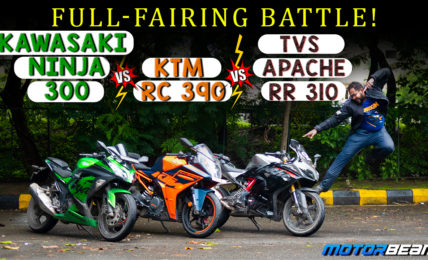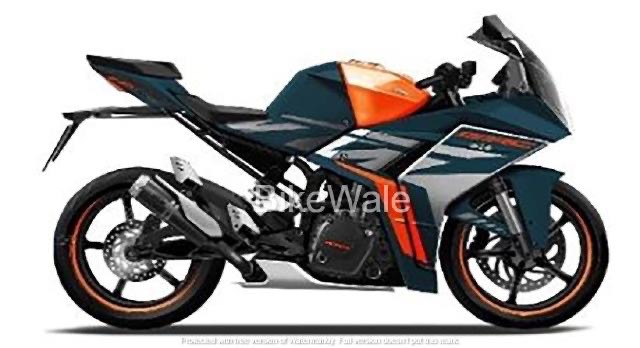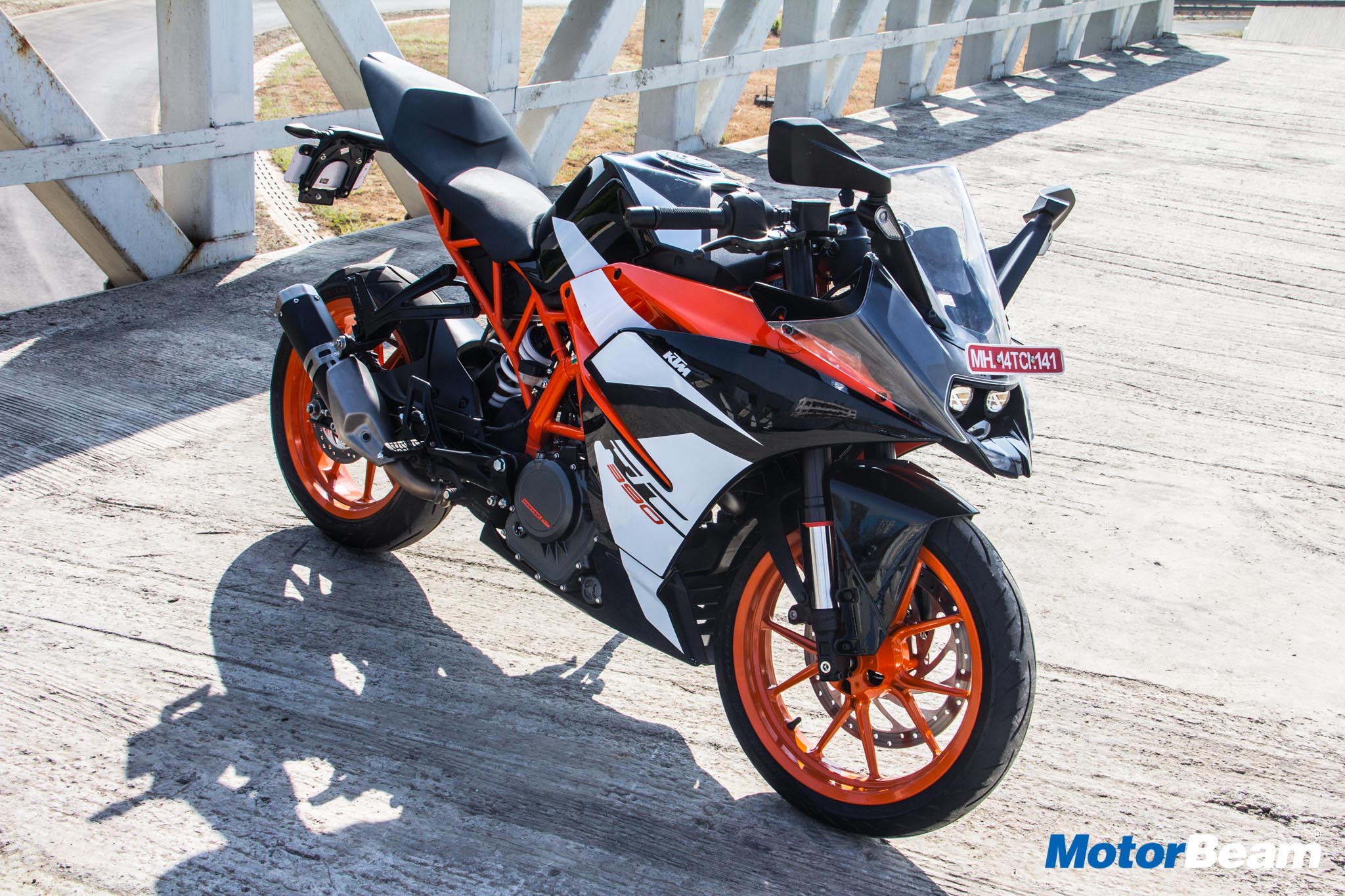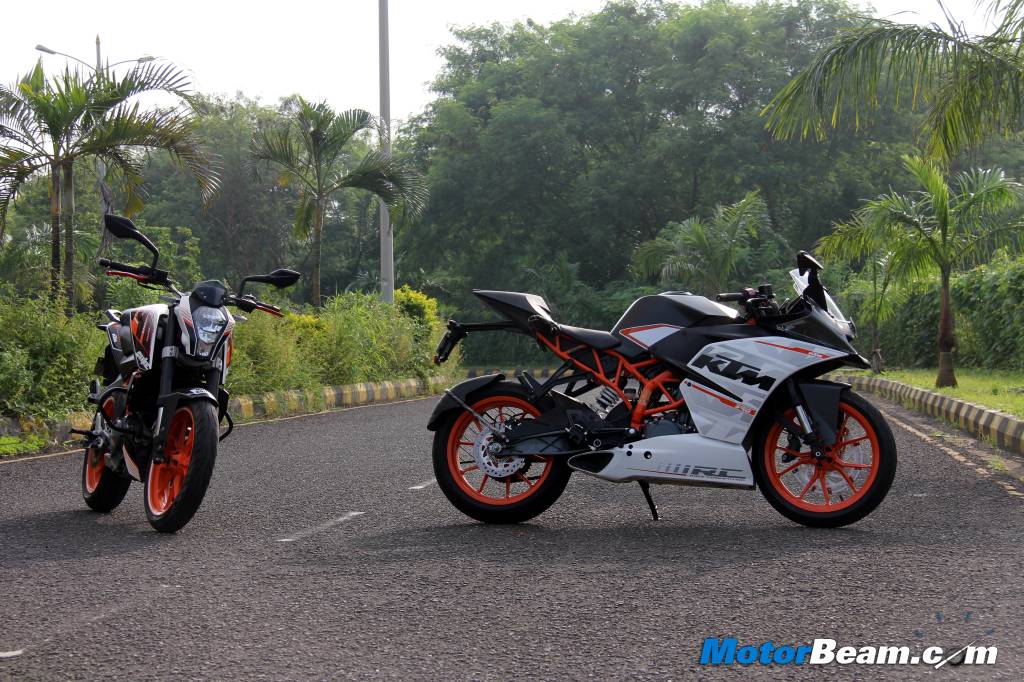
Shootout: KTM Duke 390 vs KTM RC 390
Price OTR Mumbai: Rs. 2,14,300/- (KTM Duke 390), Rs. 2,38,750/- (KTM RC 390)
They might share a lot of parts between each other but they possess different characters
They say elder sibling always gets everything he needs, well not anymore. Presenting to you here is the RC 390, the younger sibling of the Duke 390. The elder sibling has lent everything to the younger one and helped it get all the attention it needs. The Duke 390 is a cracker of a motorcycle with all the qualities you need to fuel your enthusiasm – performance, style, value and safety. But now it gets the attractive looks, clothes, accessories and shoes everybody is all of a sudden extremely interested in. This shows how our market loves only two things despite a good motorcycle already existing in the market. Fairing and number of cylinders is the new mantra of success in the two-wheeler world. Biking is a leisure activity for most in our country while today there are more enthusiasts than before and the majority is filled by the latter. We thought Bajaj would charge a good sum over the Duke as faired bikes are in utmost demand but charging just Rs. 25,000/- over the Duke made us also question if we got the wrong thing (two Duke 390s in MotorBeam’s garage). We had to put them head to head and ride them back to back to tell you facts and figures of these two motorcycles. So without adieu, we park our Duke and hop over the RC and tell you what you should be buying!
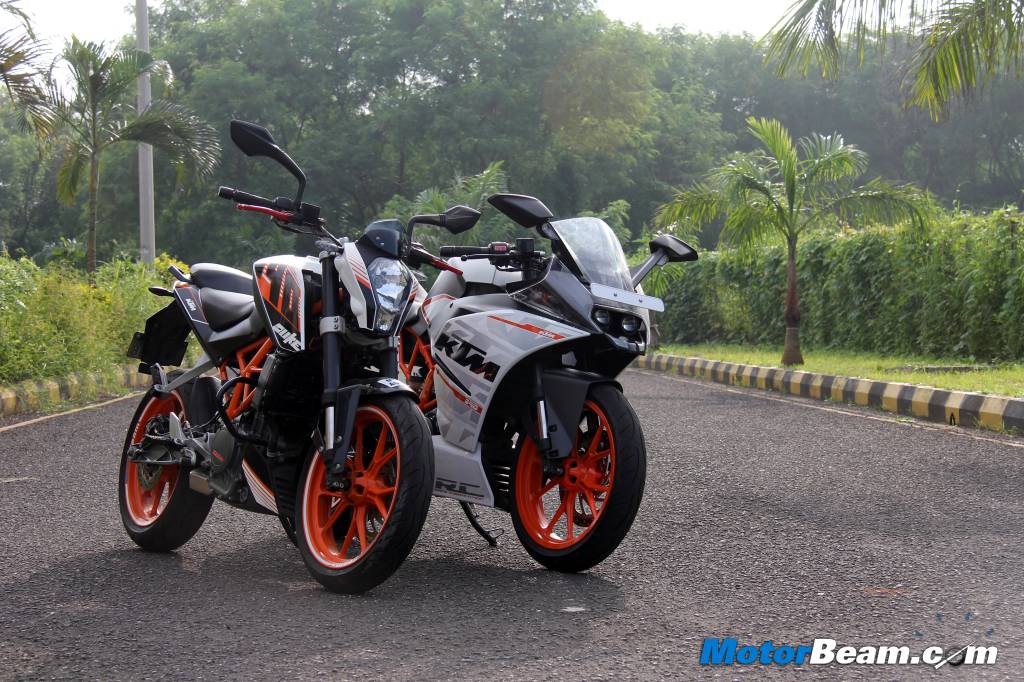
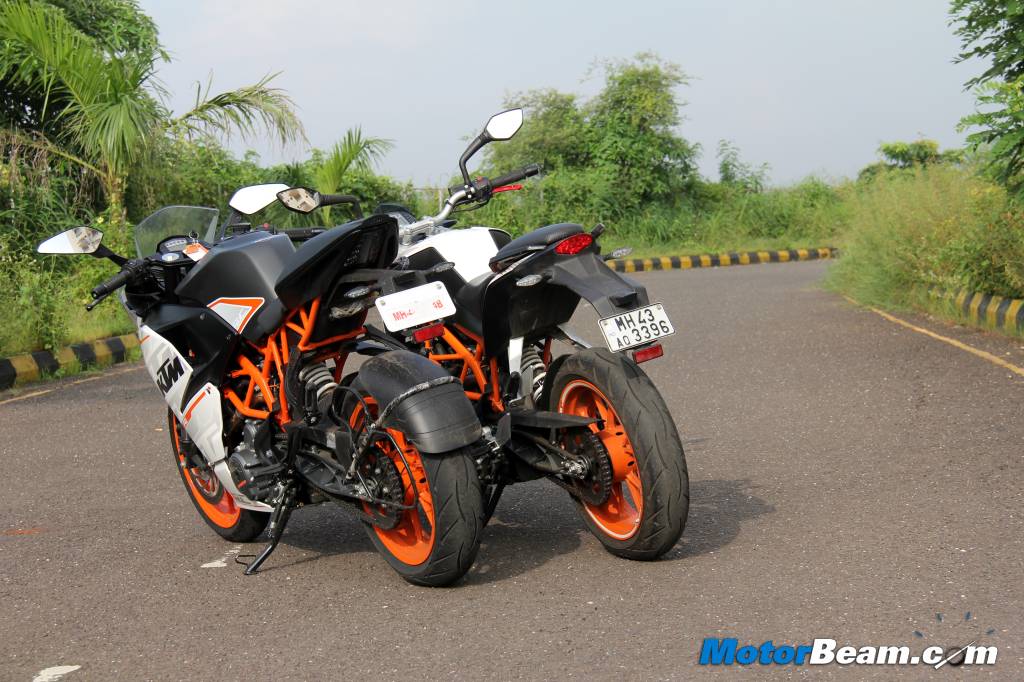
The Duke’s minimalist styling grows over you with time while the RC 390’s aggressive design is an instant hit or miss
Styling – When it comes to styling, there has been a major overhaul. Aesthetically the RC 390 is brand new and it achieves the super sport design by adopting the nose down tail up styling while the Duke is a pure street-fighter with a taller stance and minimum body panels on it. On the Duke, it’s only the tank which seems visible from a distance, rest of the panels look like they don’t exist. The insanely long belly fairing dominates most of the design on the right side of the RC 390. The faired panels are vertical but aren’t stretched all the way back so you can see the mechanical bits such as the rear monoshock, subframe and some wires.
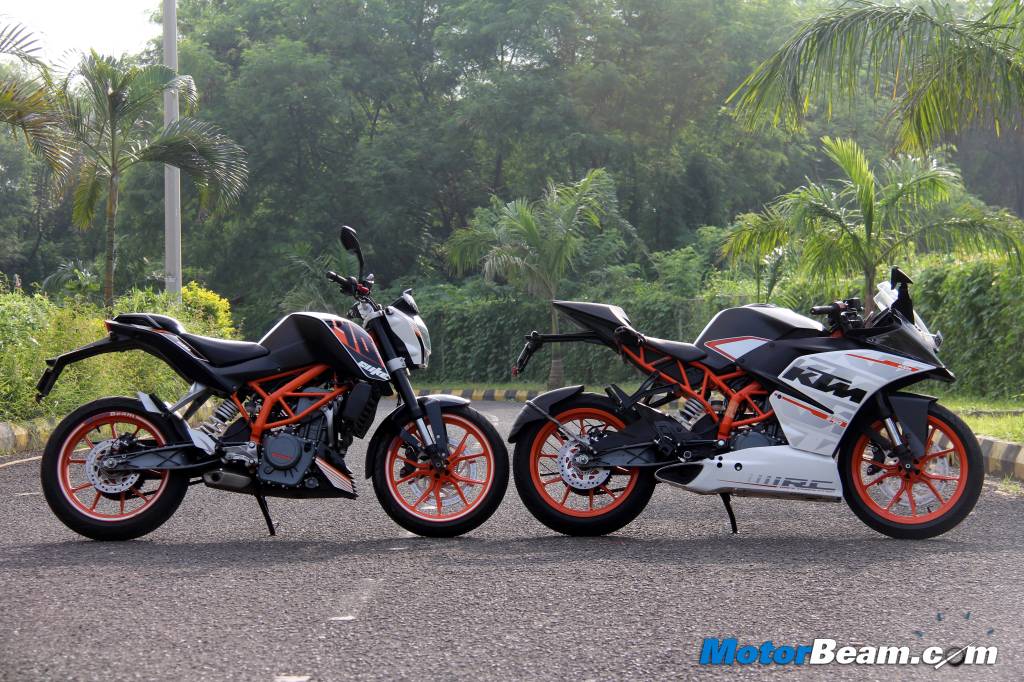
At the rear, the tail also has a super sport look with those striking vertical LED lights and the absence of a proper mudflap unlike the Duke 390 which has a conventional tail light layout. The front looks radical just like the Duke when it was launched. The RC offers dual projectors which should offer Diwali type illumination on the road while the Duke also has a very good spread and the 55W bulb provides excellent illumination. Something which should grow over time but with the DRL on the RC kept lit, there is no doubt it looks striking. Meanwhile the Duke remains a hooligan at first sight and even from a far sight. Overall though, the RC is a supersport machine which looks completely different and breaks the monotony of what we have seen from Japanese manufacturers over the decades.
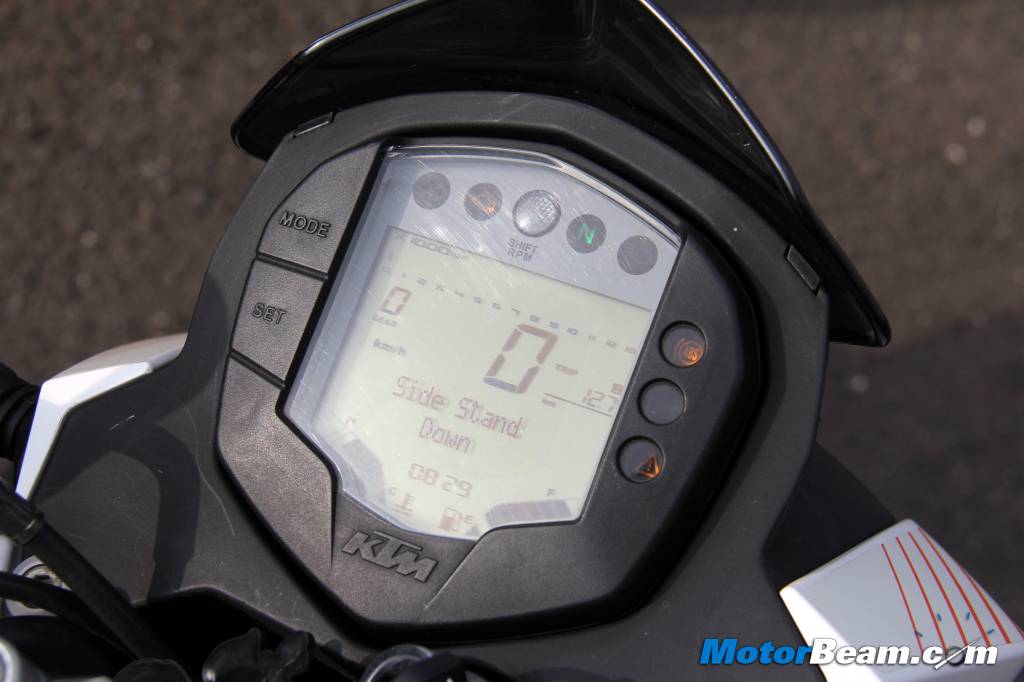
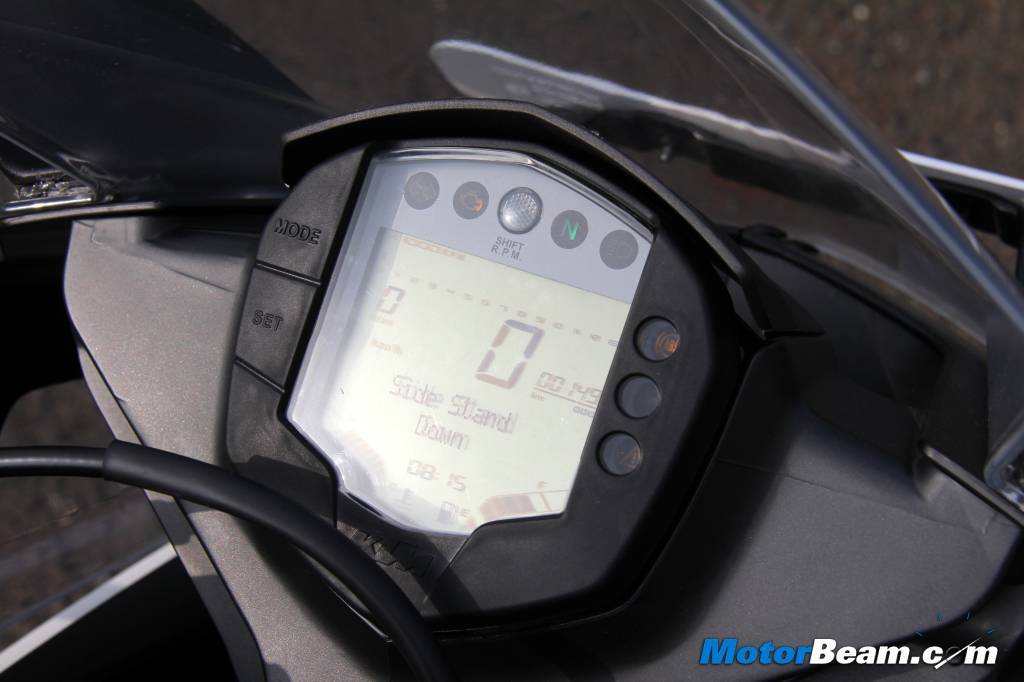
Same looking clusters with a plethora of information being displayed on-board, analogue tachometer is being missed
Instrument Cluster and Switchgear – The instrument cluster and switchgear is identical. The switches on the RC 390 look a little more boxy when compared to the Duke 390 but they remain very high quality and are back lit like the Duke. The cluster is the ditto same with the same features on board such as km/l, distance to empty, service reminder, clock, temperature bar, average speed, two trips meters, side stand warning and the usual tell tale lights which also include warning light and ABS light. Omission of solitary turn indicators are conspicuous by their absence and the digital tachometer is plain useless as you need to concentrate really hard to see what revs you are doing which turns out to be dangerous on such bikes as they go crazy at part throttle itself.
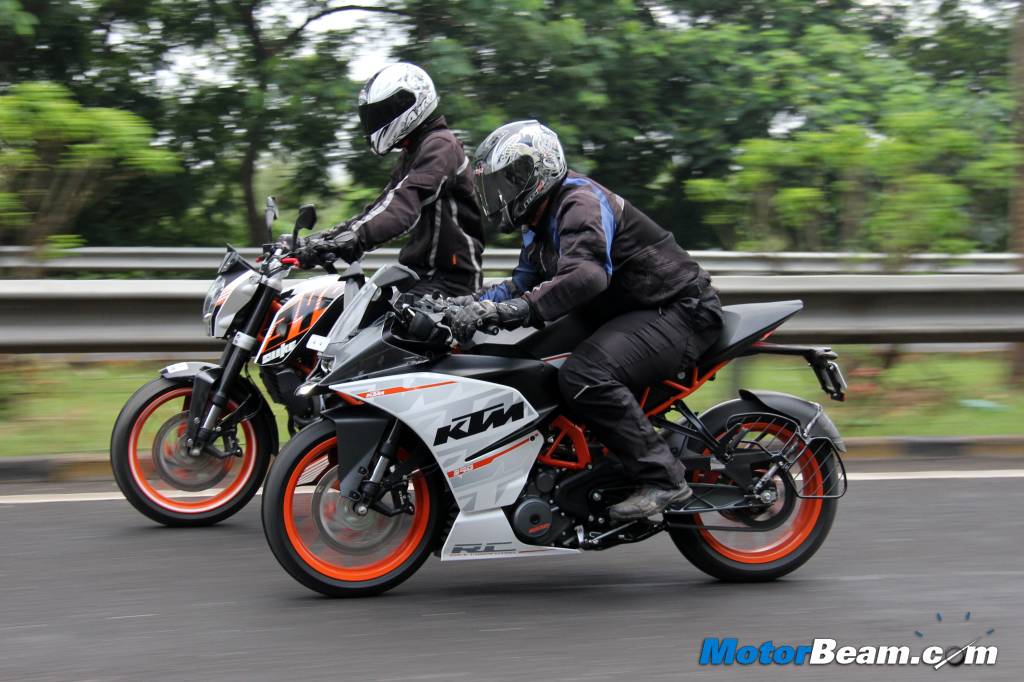
Practicality – In terms of ergonomics, the whole world has changed. The forward biased position with rear-set footpegs allow for a sporty riding position. The lower set footpegs allow for more room to roam around and give comfort on long journeys but as we know, the RC is a track screecher not a sight seeing tourer. The clip-on handlebars are nothing but a narrow extension of the handlebar that is seen on the Duke. The riding position on the Duke gives a good view of the road ahead while with the RC, you are limited to lower visibility but not as low as other sports bike in a segment or two below it. The clip-ons are well in sync with the bike width though. You do get windblast protection but only till 155 km/hr post which you have to duck down. Meanwhile on the Duke, windblast affects massively around 145 km/hr and there is no option to avoid it. Small things like levers and handlebar grips have also been changed for reduced pressure on the palms due to distance between the levers and handlebar and old pointy grips.
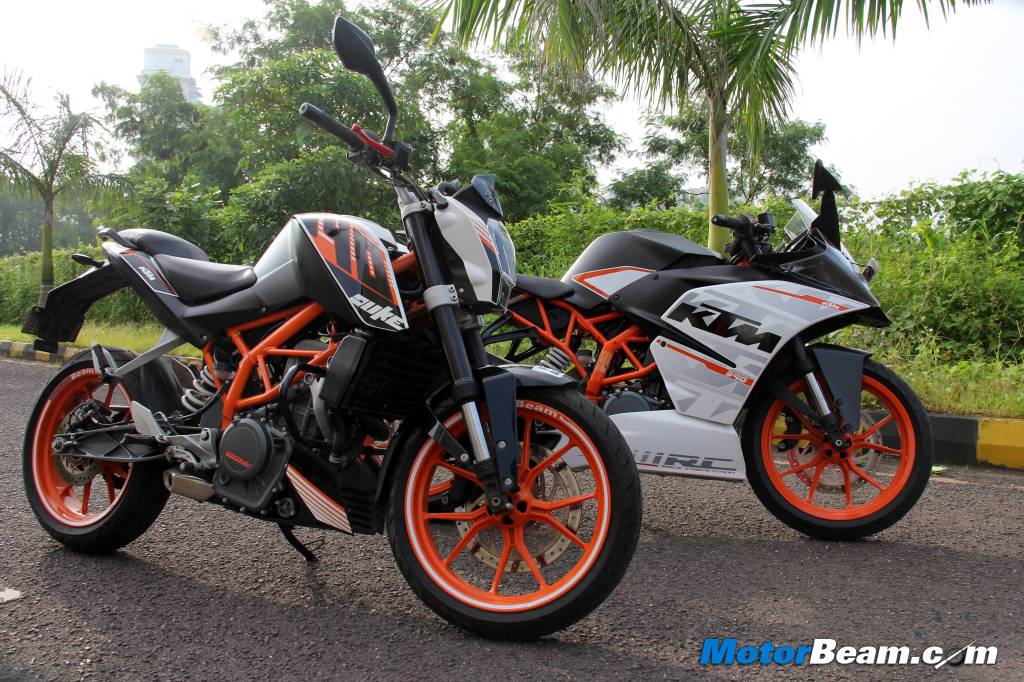
The tank when compared over the Duke helps you lock in your knees in a vertical way rather than bending in the naked version. The small and hard seat over the long and hard seat when compared to the Duke makes matters worse for long rides. Pillion seat and cowl are the same which is comfortable but yet again only milk runs are allowed not long breakfast rides. Pillions have recess carved below the seat to hold but on a bike which does 5.68 seconds to 100 km/hr, nightmares of discomfort await those pillions. Mileage should be 2-3 km/l better on the RC 390 because with these powerplant you are always doing triple digit speeds and due to better aerodynamics, the RC should be more frugal than the Duke. We saw 27 km/l on a spirited run with the RC while simultaneously we saw the Duke doing 24 km/l.
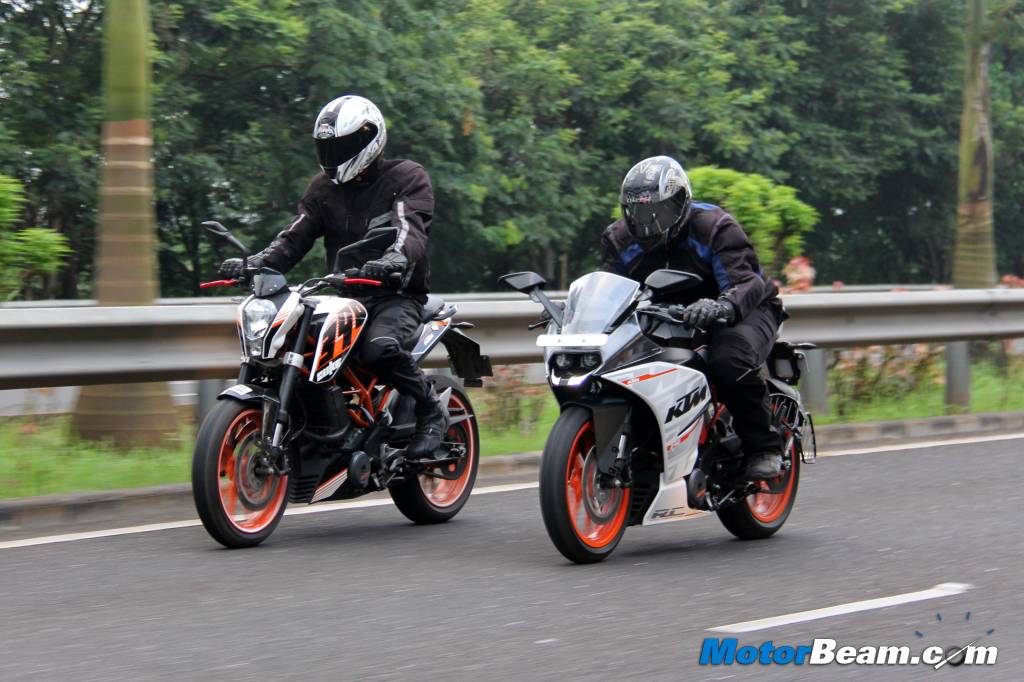
Performance – Powering both these motorcycles is the same 373.3cc single-cylinder engine producing 43.5 PS of power and 35 Nm of torque at the same RPM. No changes in gearing of these motors results in the same type of powerband as before and similar level of performance as well. The Duke 390 does 0-100 km/hr in 5.61 seconds while the RC 390 does it in 5.68 seconds, the difference turning out to be totally negligible. The acceleration and top speed still remain the most awe inspiring features of these bikes. The RC 390 manages a 5 km/hr higher top speed than the Duke owing to its better aerodynamics.
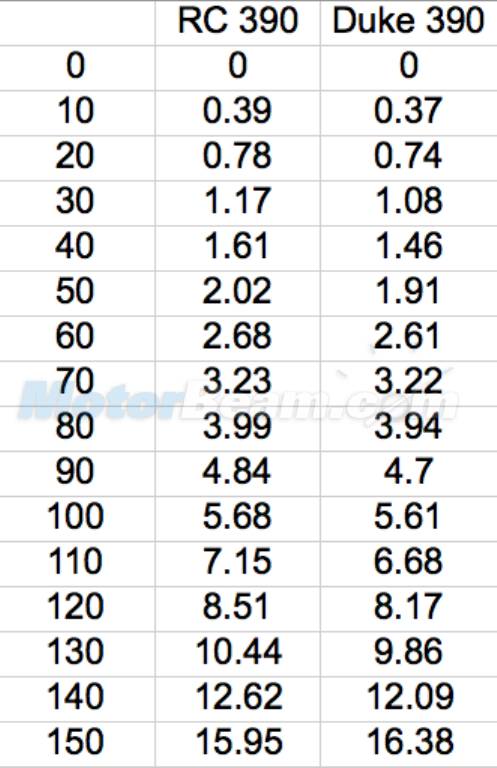
The powerplant on the Duke 390 starts pulling from 4000 RPM but due to changes to the air intake system and other calibrations on the RC, the engine feels much more tamed and starts pulling eagerly from a few hundred RPMs before. Because there is no jerking and snatching like the Duke 390, hence this has happened. Those slight modifications to the inlet are clearly noticeable as the intake noise sounds much more hollow and since the engine and exhaust sit behind the fairing, the exhaust sound is quite muted but it is the same as the Duke, albeit more punchy.
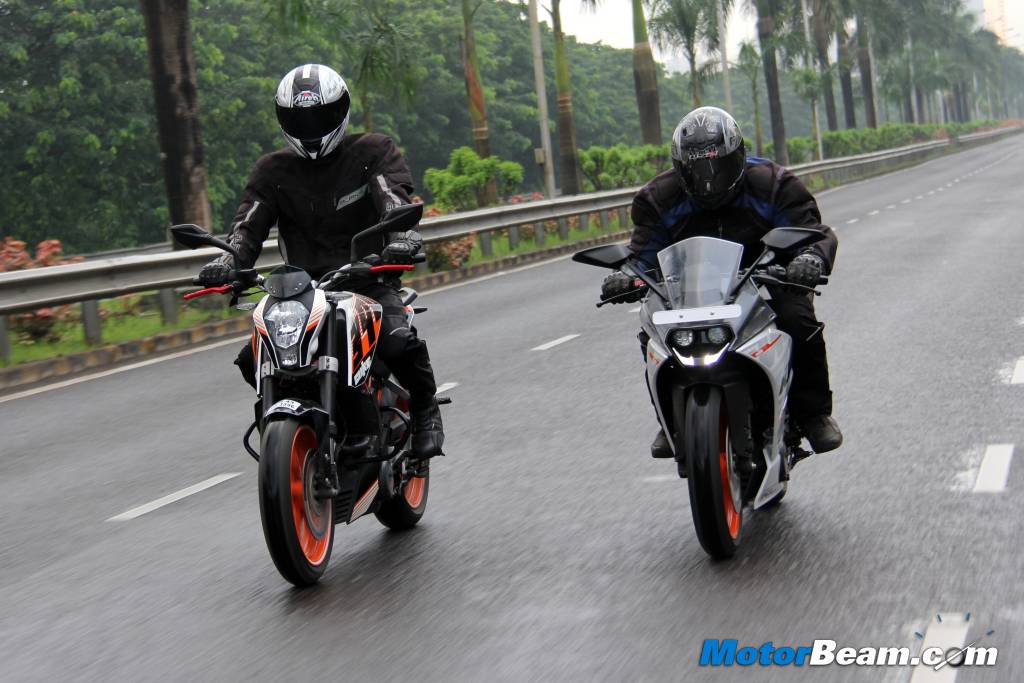
The engine on the RC 390 seems slightly more refined than the Duke 390 but rest remains the same
All of this results in slightly better ride-ability in the city from the engine point of view. When it comes to controls, the clutch is slightly lighter and the gearbox is more responsive on the RC 390 when compared to the Duke 390. There is the usual knocking if you stay in a higher gear and accelerate from lower RPMs but the knocking noise and in fact any kind of noise of the engine is tamed down so you can bear it when compared to the Duke. The best part of city ride-ability is that the Duke’s engine heat reduced drastically because the media bikes were in horrible condition back in the day when were testing it. Now with the new fully synthetic oil and over 5000 kms done on our long term bike, there is no heat and the engine has become calmer and smoother day by day which has also helped in reducing the heating. The heating has also been redirected to come behind your calf only if you stretch it on purpose to feel the heat. The RC’s engine, despite in not so good condition did not show a single sign of heat on the side of legs despite the fan was on all day long during the testing period. Clearly shows that the hot air has been redirected and taken care of and is not a troublesome affair anymore although the bike heats just like its elder sibling and a spirited run results in full bars on the temperature meter.
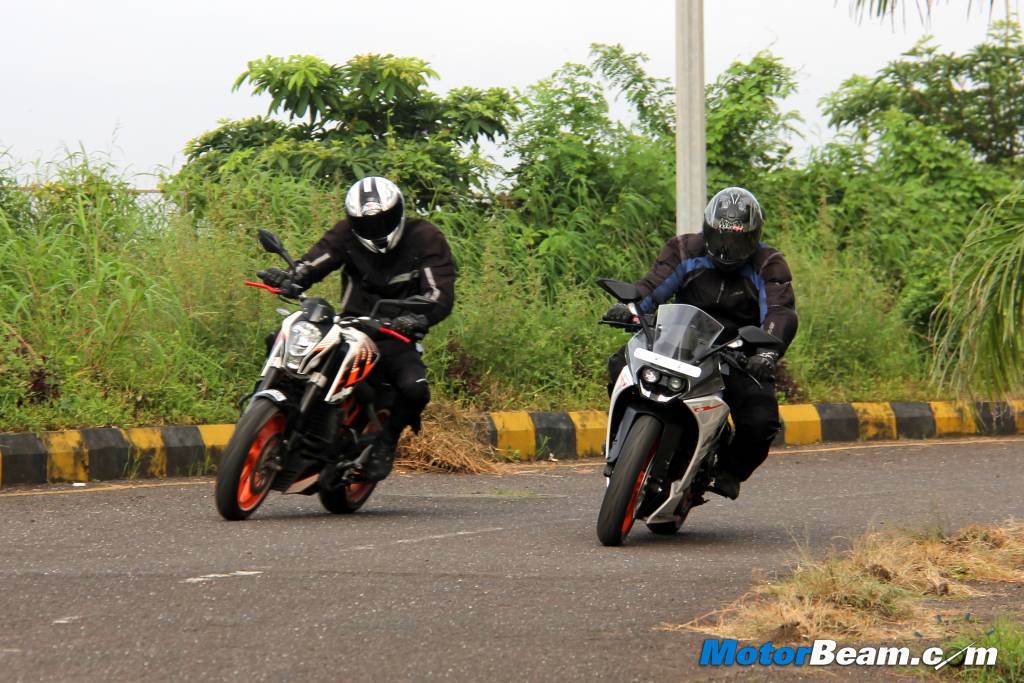
Riding Dynamics – When it comes to dynamics, both siblings are top of their game. No other manufacturer comes close to offering this level of hardware at this price which works so well in tandem that it puts bikes costing twice the amount to absolute shame. Sticky tyres, short wheelbase, light chassis and wheels coupled with feedback rich front upside down forks with stiff suspension like a rock on both ends on both bikes make them handle like a dream. The Duke already has a very raked in front-end but the RC goes a step ahead and gets 23.5 degrees instead of the 25 degrees on the Duke which means that the front-end is so sharp, so agile and so quick to turn-in that it just boggles the mind and you have to stop and see if you are riding a racing motorcycle on our roads or not! The 25 mm lowered forks give so much more feedback over the insanely feedback rich Duke 390 that we are running out of words here to explain it. Ride quality is minutely better on the Duke but both bikes are as stiff as race bikes.
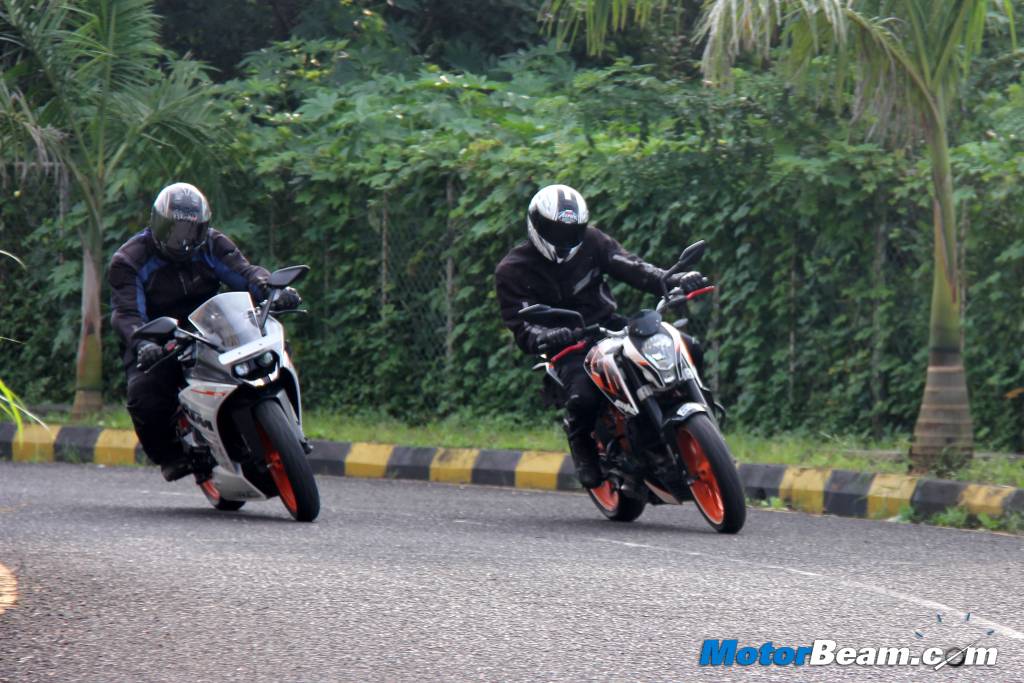
The well weighed and calibrated front-end with superior geometry than before and added weight makes high speed stability even more impressive. Changing lanes at high triple digits is a thing of joy rather than being careful most of the time like the Duke. Both have similar brakes which means both lack initial bite at the front and at the rear the lever gives a wooden feeling but braking performance is in abundance. The main advantage over the Duke is a better steering and ergonomic package which makes getting your knee down and scraping pegs a much easier task than the already impressive Duke 390. As they say, dedication towards one particular thing changes your world completely. The RC stands true to the name it has been given, Race (the) Competition.
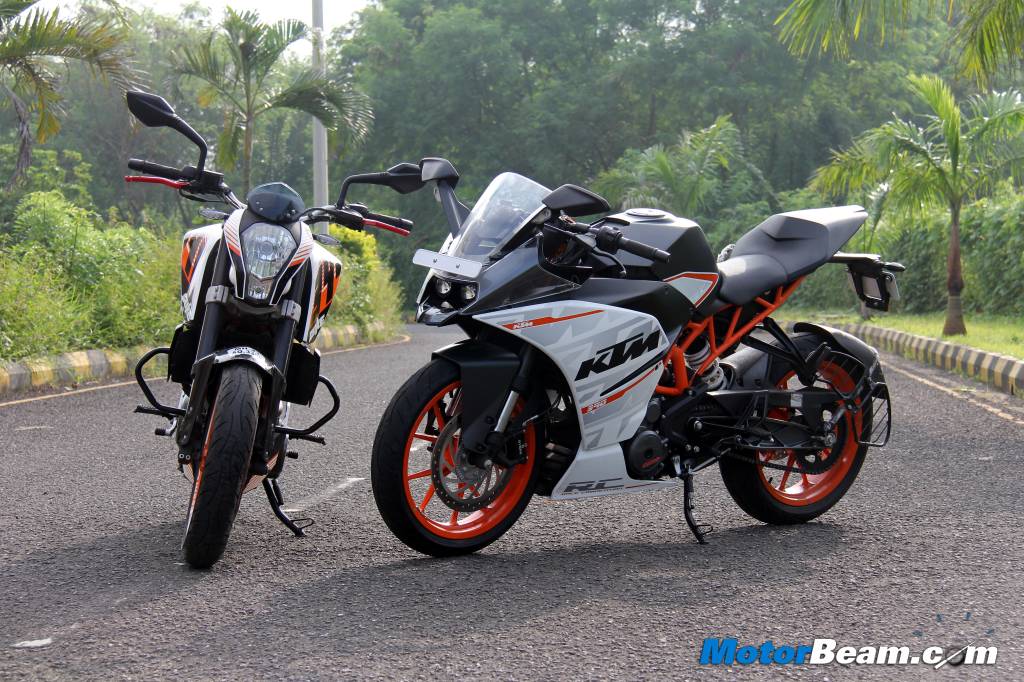
Verdict – Both of these bikes come from the same manufacturer which means it’s a win-win situation. Now when both these bikes are identical in most aspects then the going gets tough. However, it’s quite easy to decide, the Duke 390 has more practicality and is sheer value for money. The RC 390 offers more and asks very little money over the Duke and the extra you pay is 200% justified as the difference is a mere Rs. 25,000/-. The RC is for two very different kinds of people. The one with a fascination for faired bikes and the other one who enjoys race track performance at the nearest track he can find while also flaunting bling in the city.
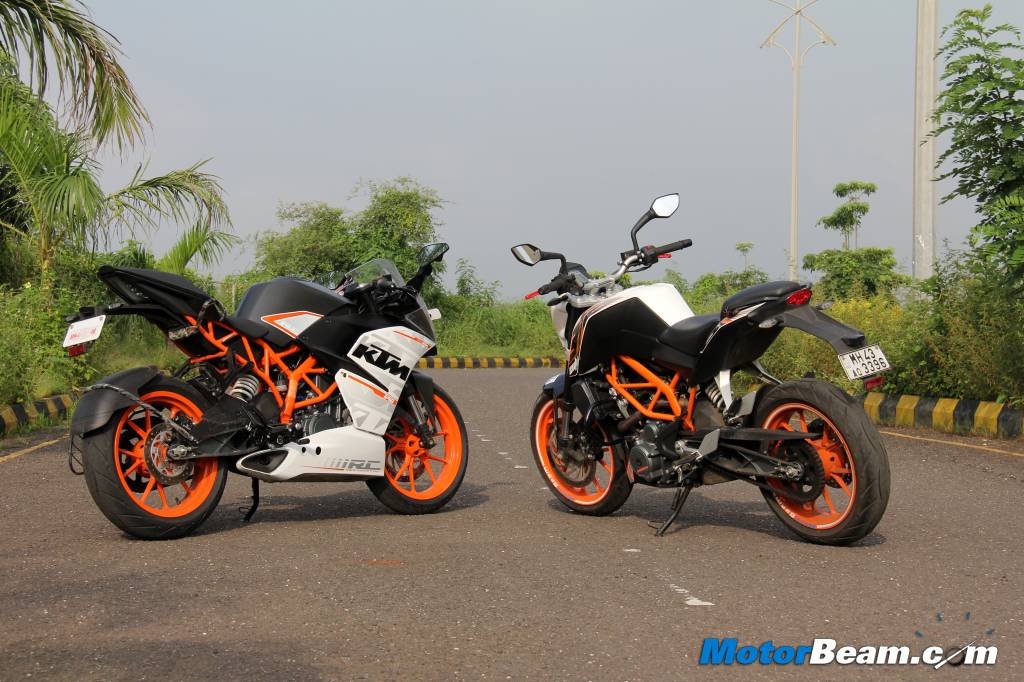
The Duke 390 manages to do it all since day one and it still does. It is the most comfortable of the lot and is slightly more accommodating with a better riding position for day to day duties, it also has a minutely bigger fuel tank. Both bikes have similar performance numbers and hence if we were to choose between the two, it would be the Duke! Wait, we already have and now it is up to you to decide which drug gets you your high. If handling and style is more important to you, than the RC 390 is the easy choice to make.
You cannot go wrong with either of these machines which come from the same stable and are the current champions in their category. Choose you priorities in terms of your budget and mostly styling and you have a winner which will give you a hair raising ride experience.
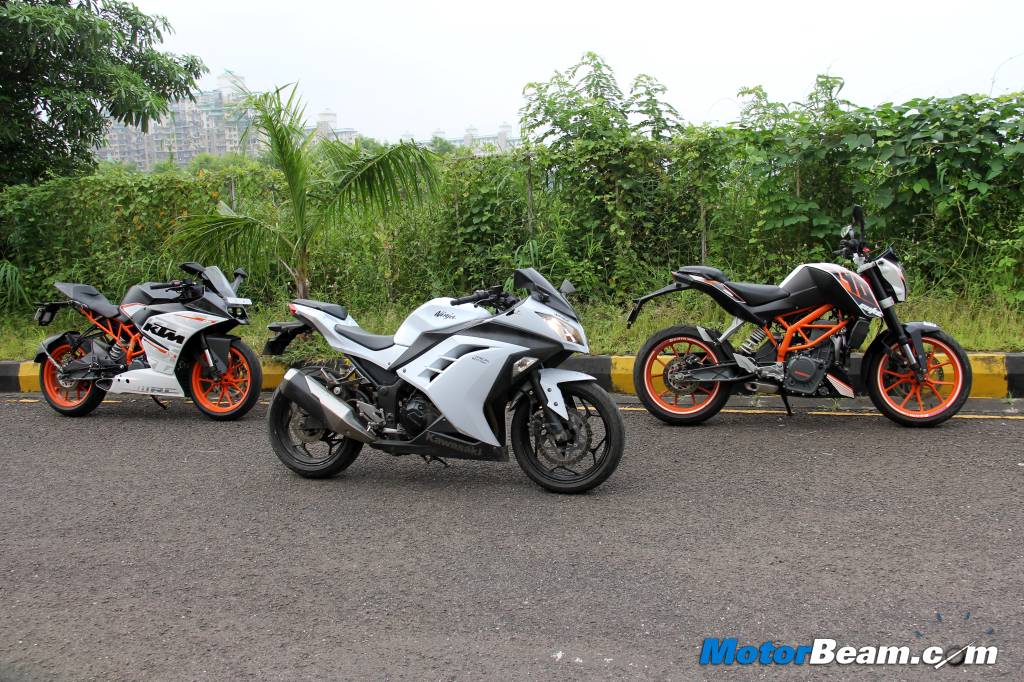
Further Reading –
KTM RC 390 Review
KTM RC 390 Long Term Review
KTM Duke 390 Review
KTM Duke 390 Long Term Review – First Report
KTM Duke 390 Long Term Review – Second Report
KTM Duke 390 vs Kawasaki Ninja 300
KTM Duke 390 vs Royal Enfield Continental GT vs Honda CBR250R
KTM Duke 390 vs Yamaha RD350
KTM Duke 390 Tuning Box Comparison
KTM RC 390 vs MINI Cooper


